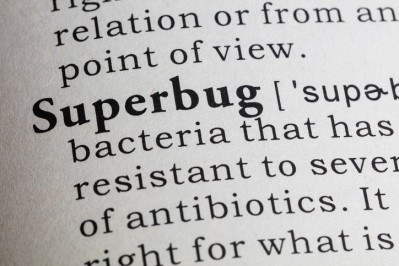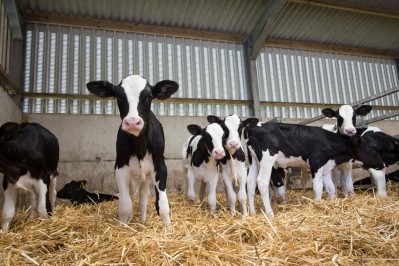US team tracks antibiotic resistant gene clusters in swine

The group, based out at Michigan State University, tracked patterns in antibiotic resistant gene clusters found during pig production when antibiotics were included in feed at several facilities in China and one in the US.
The group was looking to develop a better understanding of how certain practices within animal production influence the spread of antibiotic resistant genes and bacteria, said lead researcher James Tiedje, MSU distinguished professor of microbiology and molecular genetics and of plant, soil and microbial sciences.
“Data on components of the environmental problem are needed to help understand the fate and impact of particular practices with the eventual goal of developing a risk assessment model, and from that determine the points where improved practices should reduce risk,” he told FeedNavigator.
He started reaching the topic as a way to address antibiotic resistance, he said.
“I consider the antibiotic resistance problem among the top challenges facing the world,” he said. “It has two equally important components: the appropriated human, clinical use, and the improved management of the environmental dimension of the problem.”
The group found that resistant genes are more likely to appear in groups rather than single instances in larger swine production facilities, researchers said in the report. And the clusters do tend to include resistance ability for more than the products in use at a specific facility.
Resistance background
Bacterial resistance to antibiotics has been recognized as a global health threat, said researchers in the report. Recent use of large amounts of antibiotic in animal feed and production has offered an advantage to bacteria that are capable of resisting antibiotics.
“Sub-inhibitory antibiotic concentrations are sufficient to enrich for resistant bacteria (14), and mixtures of sub-inhibitory doses of antibiotics, such as are common in agriculture, select for the highest level of resistance,” they said.
Increasingly, governments are regulating what antibiotics can be used in animal production, they said. “Observations that agricultural antibiotics increase the abundance of resistance genes in manure and manure-amended soil and potentially in the general public provide a clear scientific basis for the regulation of agricultural uses of antibiotics,” they added.
“Despite consistency of detection and abundance of ARGs [antibiotic resistant genes] across sample types, the phylogenetic membership of these communities is distinct between farms and sample types,” said researchers. “These results provide a strong impetus to further study the effects that swine agriculture has in possibly developing multidrug resistance islands and plasmids and their dispersal throughout these communities.”
Research details
At the US facilities, fecal samples were taken on day 0 and day 14 from pigs raised in controlled environments, said the researchers. One group of swine had an antibiotic-free feed and the other group was given feed including an antibiotic supplementation.
“The point with these pigs/study is that even with no exposure to known sources of antibiotic resistance genes, they have them and even more are enriched in the pigs feed the sub-therapeutic doses in their feed,” said Tiedje. “Our new paper finds that this cluster is different than the Chinese set, so the different background of these pigs made a difference but did not eliminate the resistance genes.”
Samples also were collected from the manure pile, composted manure and soil treated with composted manure at Chinese swine facilities three parts of the country, from ‘pristine Chinese soil’ and antibiotic-free feral pigs, said researchers in the report.
Results and moving forward
Researchers used PCR and amplicon sequencing on the samples to sequence 44 genes involved with antibiotic resistance, the genetic elements that let them move and bacterial phylogeny from the different swine facilities, they said in the report.
At the different farms resistance genes were found for antibiotics that were not necessarily being used at that location, they said. However, it may be likely that using one of the products in the resistance cluster attracted the entire resistance group.
“While each Chinese farm used different antibiotic cocktails for therapy and growth promotion, no farm reported the use of all the antibiotics for which this cluster confers resistance (e.g., no farm used chloramphenicols or trimethoprim, Jiaxing did not use sulfonamides, and Putian did not use aminoglycosides, while resistance to these antibiotics is found across all farms),” they said. “Thus, independent of antibiotics used, the same genes, which may be ubiquitously distributed in China, are maintained by selection and co-selection of genetically linked resistance genes.”
In their analysis, the group found that the clusters of antibiotic resistance genes had moved through nearby environments, said Tiedje. The work was able to sequence thousands of amplicons which allow for the tracking the gene’s origin.
“The data do suggest that these genes and clusters have already moved widely throughout the environment, at least in large pig production regions,” he said. “Given that, the goal will be to minimize their concentrations and hence reduce the probability of their chances of reaching human pathogens.”
One step forward from the current research will be to use the sequencing approaches to determine if antibiotic resistant genes and the elements that let them move are linked on the same chromosomes, he said. “This is important to risk evaluation - it means that not only are there multiple bullets, but they are loaded in the delivery gun (the mobile element) cocked and ready to deliver to a pathogen if one is in range,” he added.
Source: mBio
Title: Clusters of Antibiotic Resistance Genes Enriched Together Stay Together in Swine Agriculture
DOI: 10.1128/mBio.02214-15
Authors: Timothy Johnson, Robert Stedtfeld, Qiong Wang, James Cole, Syed Hashsham, Torey Looft, Yong-Guan Zhu, James Tiedje







